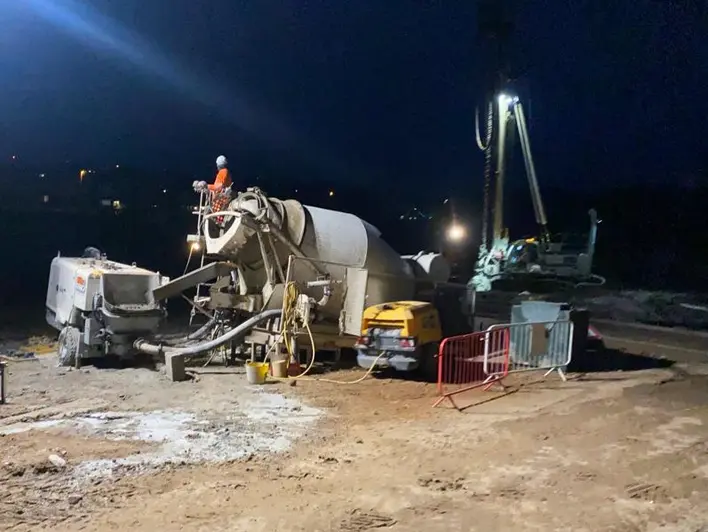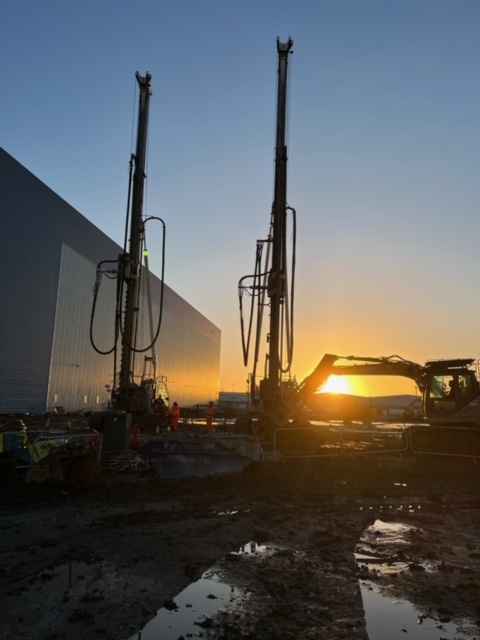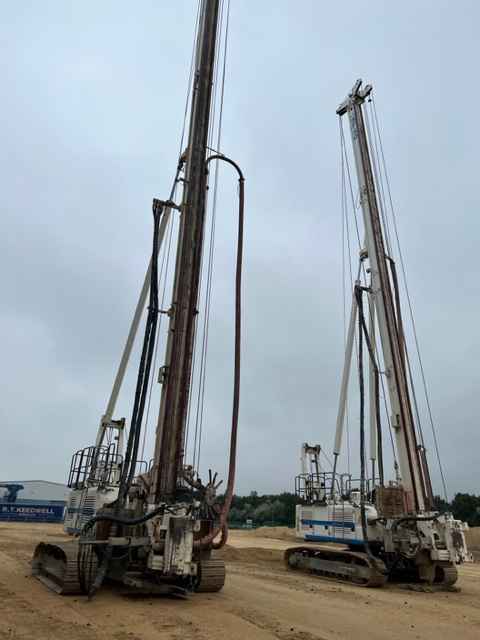All About King Post Retaining Walls | Alpha Piling LTD

Also known as Soldier Piles, king post retaining walls have been in construction usage since the late 18th century. Primarily these walls were constructed in the cities of New York, Berlin and London to provide support to the soil so that it could be retained at different levels as per the construction requirements. Their structure uses beams and panels, mainly followed by additional materials to give support and an attractive appearance. Let’s explore more about these walls:
Structural Components of King Post Retaining Wall
The basic structure of a king post retaining wall typically includes the following components:
King Posts: These are vertical posts placed at regular intervals along the length of the wall. They serve as the main load-bearing elements and provide vertical support to the horizontal beams.
Infill Panels: These infill panels are placed between the two adjacent king posts. The infill panels can be made from concrete or timber. They are reinforced with steel to give maximum structural integrity to the wall.
Other than these two main components, backfill material is filled behind the king post retaining wall that helps to give more support.
Mon–Fri: 8:00am-6:00pm
Skilled Labour
Customer Satisfaction
Advanced Machines
Installation Process of Retaining Wall
The installation process of a king post retaining wall involves several steps. Here’s a general overview of how it is typically done:
Site Preparation: Site preparation is the key step that begins with experts who conduct a survey and mark the boundaries of the wall. Later, the soil is excavated to create a level for a compact wall foundation.
Footing Installation: In the next step, the holes of appropriate size are dug at regular intervals of 1-3 metres to embed the king posts (the prime base of the king post retaining wall). The dimensions of the holes are deep and wide enough to adjust the king posts aptly.
King Post Installation: The king posts are now embedded into the prepared footing holes. It is ensured that they are plumb (perfectly vertical) using a level.
Beam Installation: Followed by the king post installation, the horizontal beams and stringers are attached to the king posts. The beams are securely connected to the posts using appropriate hardware, such as brackets or bolts.
Backfilling: Fill the space behind the retaining wall with suitable backfill material. This material helps distribute the pressure exerted by the retained soil or materials and provides additional stability to the wall.
One must not forget that the installation process can vary depending on the design, nature of the soil, structure, materials and site requirements. Therefore, it is advisable to hire the services of qualified engineers. They are skilled enough to deal with the variable conditions and design your structure per your requirements.


Advantages
With few construction components, a King post retaining wall is easy to construct and offers several other advantages.
Fast Construction: King post walls are relatively quicker to construct than other retaining systems. This means that projects can be completed in a shorter time frame, resulting in faster project turnaround.
Cost-Effectiveness: King post walls can be cost-effective compared to other retaining systems such as sheet-piled or concrete-piled walls. This can be particularly beneficial for projects with budget constraints.
Effective in Hard Ground: King post walls are cost-effective for hard ground conditions. They provide a stable and reliable retaining solution even in challenging soil or rock formations.
Minimal On-Site Spoil: Unlike other retaining systems, installing king post walls typically generates minimal spoil on-site. This can simplify waste management logistics and minimise the need for extensive cleanup.
Versatility and Adjustability: The installation of king post walls offers versatility, allowing adjustments in the field to accommodate changes. This adaptability makes it easier to address unforeseen challenges or modifications during construction.
Locally Sourced Materials: The procurement of materials for king post walls can often be sourced locally, reducing transportation costs and promoting sustainability by supporting local suppliers.
Off-Site Fabrication: King post corners can be fabricated off-site, eliminating the need for on-site hot works. This not only reduces the risk on-site but also saves time and money during construction.
Suitable for Various Applications: King post walls can be utilised for different retention applications and heights, including basements, embankment retention, and flood defence walls. They can also be employed in various ground conditions, including rock.
Silent and Vibration-Free Installation: King post walls offer a relatively silent and vibration-free installation process. This can be advantageous in areas where noise or vibrations need to be minimised, such as urban environments or near sensitive structures.
Unaffected by Groundwater: King post walls are not significantly affected by groundwater, making them suitable for retaining structures in areas with high water tables or fluctuating water levels.
Applications of King Post Retaining Walls
The adaptability of king post walls allows them to be used in different ground conditions, including rock. Whether it’s stabilising slopes, creating usable space in hilly terrain, or protecting against soil erosion, king post retaining walls offer a reliable and cost-effective solution. They can be employed in basement construction, embankment retention, and flood defence walls.
Conclusion
Being easy to construct, versatile for numerous applications, cost-effective and sturdy, King post retaining walls appear to be a reliable option as boundary walls. They can be fabricated off-site, require minimum on-site spoil, work effectively in muddy conditions, and remain unaffected by the surrounding water.
That’s why King posts retaining walls are a trustable option for clients. If you plan to construct these walls for your property, working with Alpha Piling LTD is the most suitable option.
Having acquired all the essentials, whether it’s skilled staff, the latest working machinery, efficient project planning or timely execution, we are there to serve you with the best quality services. Contact us now and let us maximise your investment’s value.
